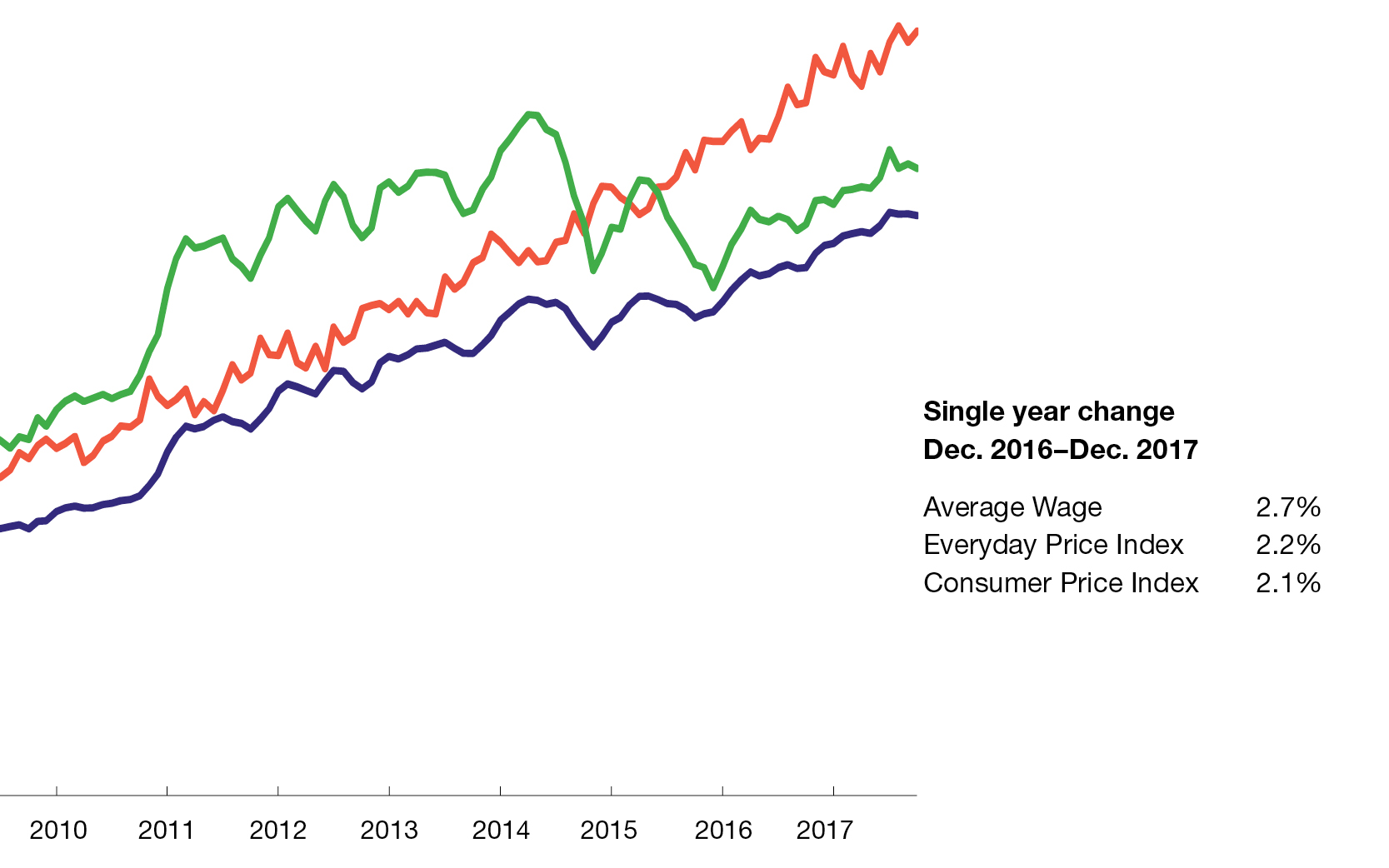Federal Spending Varies Little Per Person, but Some States Depend on it More
How does federal money get distributed to the states, and where does it go? This is a question that has been looked at recently by Ryan McMaken on the Mises Wire blog, by Tax Foundation and Pew Charitable Trusts studies, and by an analysis on WalletHub , a financial website. There are several interesting questions to parse. How much of the economic activity in each state is due to federal spending? How much federal money is spent per person in each state? What type of federal spending is most common in different states? And how do states differ?
Overall, the data show that federal spending is higher as a proportion of gross domestic product in poorer states primarily because federal spending levels are similar across states, but overall state per capita GDP varies widely. The data show some differences in spending by states due to federal jobs or installations, but the differences are not a large part of the story in most cases.
The first striking result is that many of the most federally dependent states are in the Deep South and Appalachia. According to the WalletHub methodology, the most dependent state is Mississippi, which is joined in the top five by three other southern states, Alabama, Louisiana, and Tennessee. (The No. 2 state, New Mexico, is the only one not in the Southeast.) Others with a fairly high level of federal dependency: Kentucky, West Virginia, Georgia, and South Carolina are also in the top 15.
In order to figure out what is driving this, it is necessary to take a deeper look into how these figures are calculated. WalletHub uses for each state a combination of three statistics: the ratio of federal funding to federal tax revenue, the share of federal jobs, and federal funding as a percentage of state revenue. It characterizes the first two as “state residents’ dependency” and the last one as the “state government’s dependency.” In most cases, these numbers tell a similar basic story, but occasionally, these different metrics can give drastically different impressions of states’ reliance on the federal government.
The primary states where the share of federal jobs is important are Maryland and Virginia. Each has many residents who commute to federal jobs in Washington, D.C. In fiscal year 2014, Pew reported that government salaries and wages made up 5.5 percent of each state’s GDP. Similarly, the value of government contracts made up 10 percent of Virginia’s state GDP and 6.8 percent of Maryland’s. Maryland and Virginia are two of the three states in the country in which government wages and contracts account for the highest percentage of state GDP. By comparison, these two categories – federal jobs and federal contracts — combined make up less than 4 percent on average of a state’s economy.
It is even more instructive to look at the other extreme cases. As a reader might suspect, the only way to be more dependent on government contracts and jobs than being D.C.-adjacent is to be a small state that hosts large government installations. The second highest-ranking state for government contracts is New Mexico, home of Los Alamos National Laboratory and defense contracts largely related to the Air Force. According to USAspending.gov, Lockheed Martin was the biggest New Mexico recipient of government grants in fiscal year 2014. For government salaries and wages – which include military as well as civilian outlays – the percentage leader is Hawaii, at 7.6 percent of state GDP. This is due primarily to its concentration of military bases for all branches of the armed services. Alaska is fourth with 4.5 percent, and in the contiguous states the next highest is, once again, New Mexico, at 3.3 percent. After that, we see the Appalachian and southern states creeping back onto the list, with Kentucky, Alabama, and Mississippi following New Mexico.
Our discussion so far has focused on federal employees and grants because these categories tend to have a lot of interstate variation, but they account for only 20 percent of federal spending. Government grants (largely to states for Medicaid) account for almost another 20 percent of federal spending. Retirement benefits (mostly Social Security) and non-retirement benefits (mostly Medicare) make up the other 60 percent. There are a few interesting facts about the two benefits categories. First, Pew estimates that they are responsible for not only 60 percent of federal spending in the states but over 90 percent of the increase in inflation-adjusted federal spending in the U.S. between 2005 and 2014. Second, the standard deviation of per capita spending on government benefits among states is around $500 for retirement benefits and $400 for non-retirement benefits, meaning that about two-thirds of states are within those amounts of the mean in either direction. (The standard deviations for per capita grants, contracts, and government salaries are over $1,000 for each, despite lower overall spending in these categories.)
In other words, the two benefits categories – Social Security and Medicare — are responsible for most government spending and almost all the growth in government spending. Also, spending for these programs flows fairly evenly to all the states.
The disparity in federal spending by state GDP is due almost entirely to differentials in states’ per capita GDP, not federal spending. For example, compare Mississippi to Massachusetts. According to the Pew report, in Mississippi federal spending is 32.9 percent of state GDP, and in Massachusetts it is only 16.6 percent. Because Mississippi has a more impoverished population, federal tax receipts are also lower. The Mises analysis estimates almost five times as much federal-spending-to-federal taxes in Mississippi as in Massachusetts. By any measure, it is clear that Mississippi relies far more on federal spending and that federal spending acts as a wealth transfer from states like Massachusetts to states like Mississippi.
However, that transfer is mostly due not to a choice to award more discretionary spending to states like Mississippi, but because poorer states need help from wealthier states in paying for their residents who receive government benefits. In FY 2014, the federal government spent almost the same per capita in the two states — $11,102 in Massachusetts and $11,470 in Mississippi. The distribution in spending for Medicare, Medicaid, Social Security, federal contracts, and federal employment was also similar. The reason that federal spending is twice as high as a proportion of Mississippi’s GDP is that Mississippi’s per capita GDP is about half as large, about $31,000 compared with $64,000 in Massachusetts.
From the state level, federal spending can be viewed as a transfer from wealthy to less wealthy states. While technically correct, this framing of the problem, sometimes seen even in outlets such as the Wall Street Journal, may not be the most instructive. It is more accurate, as shown in the breakdown of spending, to say it is largely a transfer from the wealthy in any state to the elderly and disabled in all states. (The transfer is all the more apparent when taking into account that federal spending is partially funded by borrowing.) This is perhaps not a surprise, since Social Security and Medicare are two of the largest items in the federal budget. With an aging population, this suggests the federal budget will rise as a percentage of states’ GDP in a similar fashion among states, as seniors in all states are funded from a national pool.





